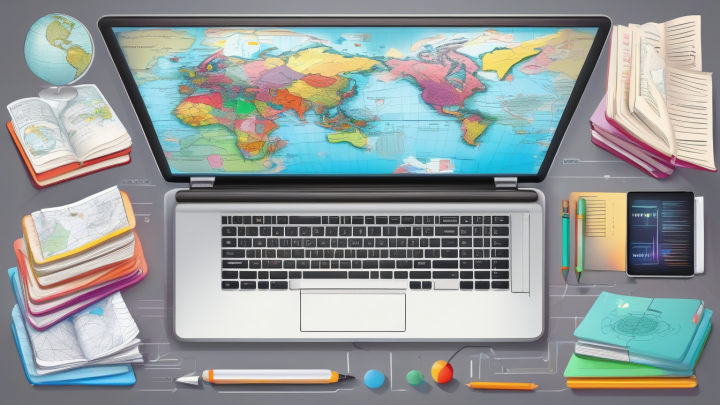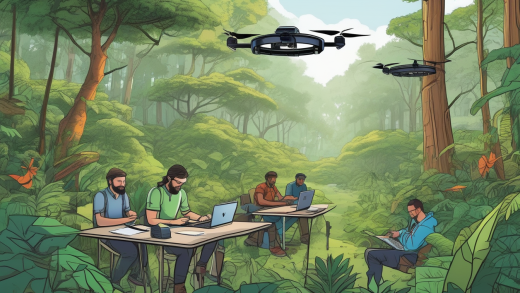In today’s interconnected world, the need for effective communication across languages has never been more crucial. Artificial Intelligence (AI) is stepping in to bridge these gaps, revolutionizing how we translate languages and interact globally. Imagine a world where language barriers fade away, allowing people from different cultures to connect effortlessly. This is not just a dream; it’s becoming a reality thanks to AI.
AI technologies are enhancing language translation by improving accuracy, speed, and accessibility. Traditional translation methods often struggled with nuances and context, but AI is changing the game. With machine learning and neural networks, AI can analyze vast amounts of data, learning from each translation to provide more accurate results. This means that whether you’re a business looking to expand internationally or a traveler navigating a foreign country, AI-powered translation tools can make your experience smoother and more enjoyable.
Furthermore, AI is not just about translating words; it’s about understanding the context. Imagine trying to translate a joke or a cultural reference; without context, the meaning can be lost. AI is evolving to grasp these subtleties, making conversations more meaningful. For instance, tools like Google Translate and Microsoft Translator are now equipped with features that allow them to provide context-aware translations, ensuring that the essence of the message is retained.
However, the journey doesn’t end here. As we embrace AI in translation, we must also consider the challenges that come with it. From cultural nuances to ethical implications, the road ahead is complex. Yet, the potential for AI to transform communication is immense. The future promises even more advancements, paving the way for a world where understanding each other is as simple as pressing a button.

The Evolution of Language Translation Technology
Language translation technology has come a long way, evolving from the cumbersome, manual processes of the past to the sophisticated AI-powered tools we use today. Imagine a world where translating a document or having a conversation in another language required hours of painstaking effort—this was the reality until just a few decades ago. The journey began with simple dictionaries and phrasebooks, which, while helpful, often left much to be desired in terms of accuracy and context.
As technology advanced, so did the methods of translation. The introduction of machine translation in the 1950s marked a significant milestone. Early systems operated on basic algorithms that could translate text word-for-word, but they often failed to grasp the nuances of language, leading to awkward and sometimes nonsensical translations. However, this laid the groundwork for future innovations.
Fast forward to the 1980s and 1990s, when the advent of the internet opened up new possibilities. Suddenly, vast amounts of data were available for training translation systems. This era saw the birth of statistical machine translation, which utilized probabilities to improve translation accuracy. By analyzing large datasets, these systems could identify patterns and make more contextually appropriate translations.
Today, we stand on the brink of a new era with the rise of AI and deep learning. Neural machine translation (NMT) has revolutionized the field by mimicking human cognitive processes. NMT systems are capable of understanding context, idioms, and cultural nuances better than ever before. They learn from vast datasets, continuously improving their accuracy and fluency. As we look ahead, the integration of AI in language translation not only enhances communication but also bridges cultural divides, making the world feel a little smaller.
In summary, the evolution of language translation technology has been marked by significant milestones:
- Manual translation methods
- Machine translation emergence in the 1950s
- Statistical machine translation in the 1980s
- Neural machine translation and AI advancements
This journey reflects humanity’s quest for better communication, and with AI leading the charge, the future of language translation looks incredibly promising.
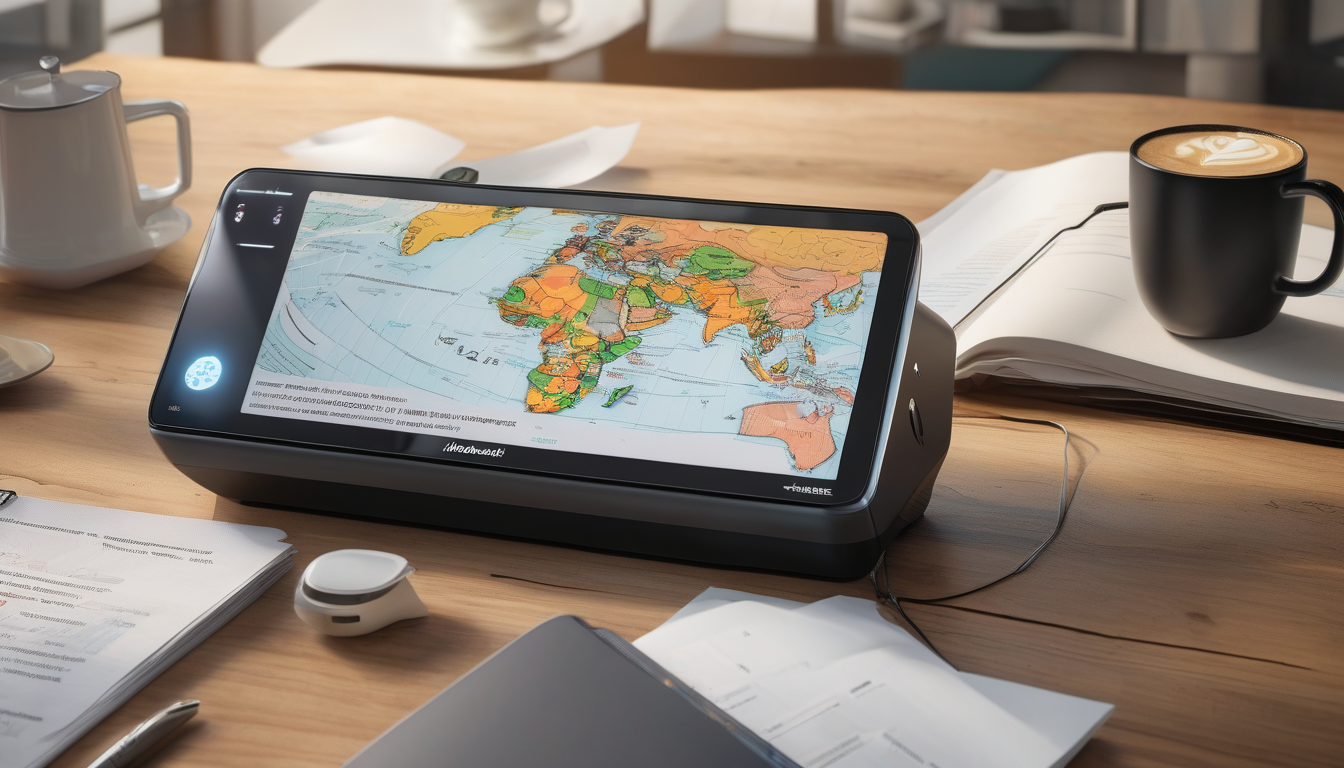
AI-Powered Translation Tools
In today’s interconnected world, are revolutionizing the way we communicate across language barriers. Imagine trying to converse with someone from a different part of the globe without the help of these advanced technologies. It would be like trying to navigate a maze blindfolded! These tools not only enhance accuracy but also speed up the translation process, making communication seamless and efficient.
Some of the most popular AI translation tools include Google Translate, DeepL, and Microsoft Translator. Each of these platforms offers unique features that cater to different needs. For instance, Google Translate supports over 100 languages and provides instant translations through its mobile app, making it a go-to for travelers. On the other hand, DeepL uses sophisticated neural networks to produce translations that are often more fluent and contextually appropriate than its competitors. This is crucial for businesses that rely on precise communication in their operations.
What really sets these tools apart is their underlying technology, primarily powered by machine learning algorithms. These algorithms learn from vast amounts of data, continuously improving their translation accuracy over time. As they process more texts, they begin to understand the nuances of different languages, which is essential for translating idiomatic expressions and cultural references accurately. For example, consider the phrase “kick the bucket,” which means to die. A basic translation tool might interpret it literally, but an AI-powered tool recognizes its figurative meaning.
Furthermore, the integration of neural machine translation marks a significant leap in translation technology. This technique utilizes deep learning to deliver translations that sound more natural and are contextually relevant. However, the effectiveness of these tools largely depends on the quality of the data used for training. High-quality, diverse datasets are crucial for ensuring that translations are not only accurate but also culturally sensitive.
In summary, AI-powered translation tools are not just about converting words from one language to another; they are about bridging cultural divides and enhancing global interactions. As technology continues to evolve, we can expect even more sophisticated tools that will further break down the barriers of communication.
Machine Learning Algorithms
Machine learning algorithms are the backbone of modern AI translation tools, enabling them to process and understand languages in ways that were once thought impossible. Imagine teaching a child to speak; you wouldn’t just throw them a dictionary and expect them to learn. Instead, you’d engage them in conversations, correct their mistakes, and expose them to a variety of contexts. Similarly, machine learning algorithms learn from vast amounts of data, allowing them to refine their translation capabilities over time.
At the core of these algorithms are various techniques that allow machines to recognize patterns and make predictions based on input data. Some of the most common types include:
- Supervised Learning: In this approach, algorithms are trained on labeled datasets where the correct output is already known. This method helps the system learn the relationship between input and output, leading to more accurate translations.
- Unsupervised Learning: Here, algorithms analyze data without predefined labels, discovering hidden patterns and structures. This can be particularly useful for understanding language nuances that are not explicitly defined.
- Reinforcement Learning: This technique involves learning through trial and error, where the algorithm receives feedback based on its performance, helping it improve over time.
The beauty of machine learning algorithms lies in their ability to adapt. As they encounter new phrases, dialects, and cultural contexts, they become more adept at providing translations that are not just accurate but also contextually appropriate. This adaptability is crucial in a world where language is constantly evolving. Moreover, the integration of advanced algorithms like neural networks has propelled AI translation to new heights, enabling more natural and fluid translations that feel less mechanical and more human-like.
In summary, machine learning algorithms are transforming the landscape of language translation, making it faster, more efficient, and increasingly reliable. As these technologies continue to develop, we can expect even greater improvements in how we communicate across different languages, breaking down barriers and fostering global connections like never before.
Neural Machine Translation
Neural Machine Translation (NMT) represents a significant leap forward in the realm of language translation, utilizing advanced deep learning techniques to produce translations that are not only accurate but also contextually relevant. Unlike traditional translation methods that relied heavily on phrase-based approaches, NMT leverages neural networks to understand the broader context of sentences, making it possible to generate translations that flow naturally and sound more human-like.
One of the most remarkable features of NMT is its ability to learn from vast amounts of data. This means that the more data it processes, the better it gets at understanding nuances in language. Imagine teaching a child to speak by exposing them to a rich tapestry of conversations; similarly, NMT systems are trained on extensive datasets, allowing them to grasp various linguistic subtleties. This training process involves several key components:
- Encoder-Decoder Architecture: This structure allows the model to first encode the input sentence into a fixed-size vector and then decode it into the target language, facilitating a smooth translation process.
- Attention Mechanisms: By focusing on specific parts of the input sentence during translation, attention mechanisms help NMT models produce more accurate outputs, especially for longer sentences.
- Contextual Awareness: NMT excels in maintaining context across sentences, which is crucial for producing coherent translations that reflect the original meaning.
Moreover, the performance of NMT systems has been continually improving, thanks to ongoing research and advancements in computational power. For instance, the introduction of transformer models has revolutionized the field, enabling translations that can capture complex language structures and idiomatic expressions more effectively than ever before. As we look ahead, the potential for NMT to bridge language barriers is immense, paving the way for more inclusive global communication.
Data Training and Quality
When it comes to the effectiveness of AI in language translation, data training and quality are the unsung heroes. Imagine trying to build a house without a solid foundation; that’s precisely what happens when AI translation models are trained on poor-quality data. The richness and diversity of the datasets used directly influence how well these models can understand and translate languages. The more varied the data, the better the model becomes at grasping nuances and context.
High-quality data is not just about quantity; it’s about quality. For instance, if a model is trained mostly on formal texts, it might struggle with colloquial language or idiomatic expressions. This is where the challenge lies: AI needs to learn from a wide range of sources, including:
- Literary works
- Social media conversations
- Technical documents
- Everyday dialogues
Moreover, the process of data curation plays a crucial role. Curating data involves selecting the right sources and ensuring that they are representative of the languages being translated. Without this careful selection, AI models risk becoming biased or skewed, leading to inaccuracies in translation. For example, if an AI tool primarily learns from a specific cultural context, it may fail to accurately translate phrases that hold different meanings in other cultures.
To illustrate the impact of data quality, consider the following table:
| Data Quality | Translation Accuracy |
|---|---|
| High-Quality Diverse Data | 95%+ |
| Moderate Quality Data | 70%-85% |
| Low-Quality Data | Below 70% |
In summary, the journey of AI in language translation is heavily reliant on the data it consumes. By prioritizing high-quality, diverse datasets, we can significantly enhance the capabilities of AI, making it a powerful ally in bridging communication gaps across cultures.
Real-time Communication Solutions
In our fast-paced world, have become essential for breaking down language barriers and fostering global interactions. Imagine being in a meeting with colleagues from different corners of the globe, each speaking a different language. Thanks to AI-driven tools, this scenario is no longer a challenge but a seamless experience. These solutions leverage advanced technology to provide instant translations, allowing for smooth conversations without the awkward pauses of traditional translation methods.
One of the most exciting aspects of these tools is their ability to adapt and learn. For instance, AI-powered instant messaging apps can now translate messages in real-time, enabling users to converse naturally, as if they were speaking the same language. This not only enhances communication but also fosters a sense of connection and understanding among users. Moreover, platforms like video conferencing tools are incorporating AI translation features, allowing participants to see subtitles in their preferred language while engaging in live discussions.
As we dive deeper into the capabilities of these solutions, it’s essential to recognize their impact on various sectors. Businesses are now able to expand their reach without the fear of miscommunication. Educational institutions can connect with students from diverse backgrounds, enriching the learning experience. Even in healthcare, real-time translation tools are proving invaluable in providing care to patients who speak different languages.
However, while these advancements are impressive, they do come with their own set of challenges. For example, the accuracy of translations can vary based on the complexity of the language or the context of the conversation. Despite these hurdles, the future looks bright. As AI continues to evolve, we can anticipate even more sophisticated solutions that will not only enhance communication but also promote cultural exchange and understanding.
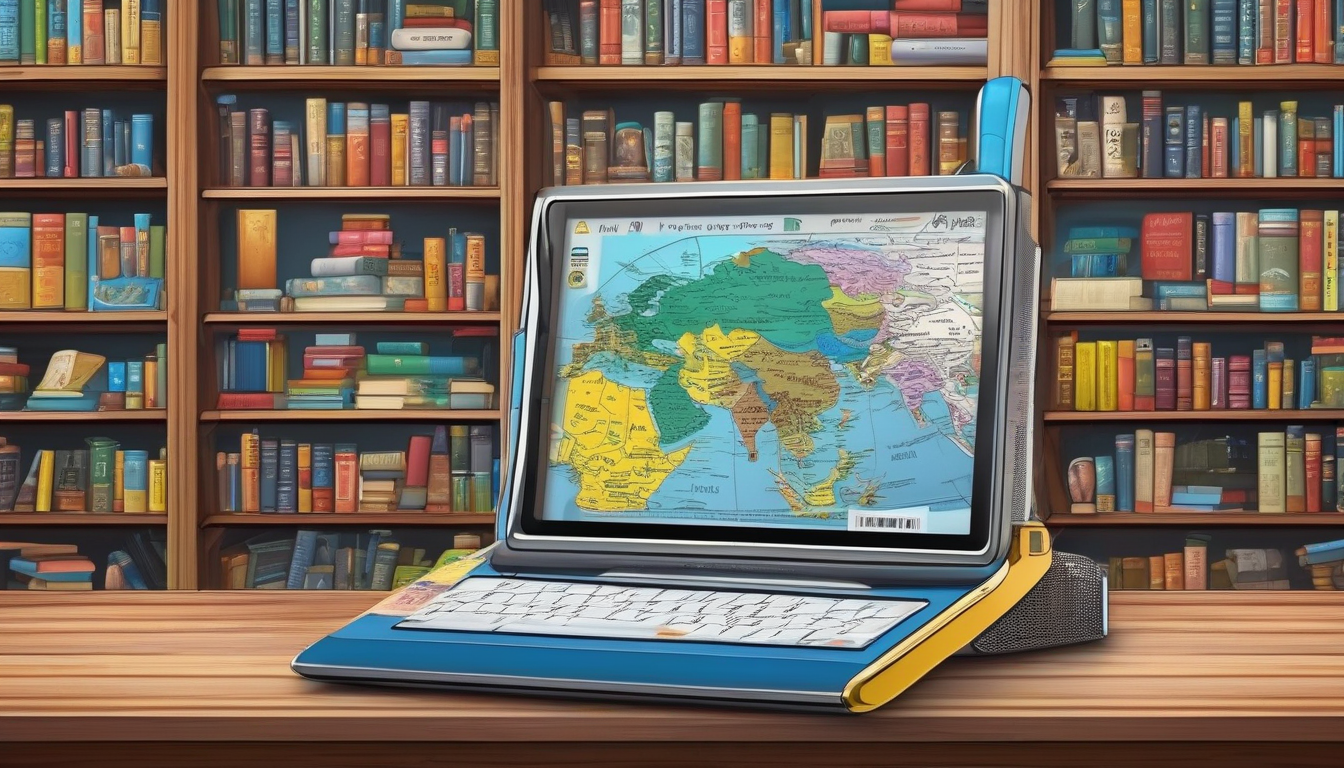
Challenges in AI Translation
While AI translation technology has made significant strides, it still faces a myriad of challenges that can hinder its effectiveness. One of the primary issues is the nuance of language. Languages are rich with idiomatic expressions, cultural references, and subtle meanings that can be lost in translation. For instance, the phrase “kick the bucket” doesn’t literally mean kicking a bucket; it’s an idiom for dying. AI often struggles with such expressions, leading to translations that can be misleading or confusing.
Moreover, contextual understanding plays a crucial role in language translation. AI systems can sometimes misinterpret context, resulting in awkward or incorrect translations. Imagine a business meeting where a simple phrase could have multiple meanings depending on the situation. If AI fails to grasp the context, the communication could falter, causing potential misunderstandings or even conflicts.
Another challenge lies in the diversity of languages. With over 7,000 languages spoken worldwide, the variety and complexity can overwhelm AI systems. Some languages have unique grammatical structures or cultural nuances that are difficult for AI to learn. For example, tonal languages like Mandarin Chinese rely heavily on tone to convey meaning, which can be a significant hurdle for AI models that are not trained on such intricacies.
Additionally, there are ethical considerations surrounding AI translation. Concerns about data privacy and the potential for bias in translation outputs are paramount. If AI models are trained on biased data, they may produce translations that reinforce stereotypes or exclude certain cultural perspectives. This raises questions about the responsibility of developers to ensure their AI systems are fair and inclusive.
In conclusion, while AI translation technology is transforming communication, it’s essential to address these challenges head-on. By improving contextual understanding, refining algorithms, and ensuring ethical practices, we can pave the way for more accurate and culturally sensitive translations in the future.
Contextual Understanding
When we dive into the world of language translation, one of the most critical aspects that often gets overlooked is . Imagine trying to translate a joke or a metaphor without grasping the underlying meaning—it’s like trying to catch smoke with your bare hands! AI translation tools, while incredibly advanced, still struggle with this nuanced aspect of language. They can convert words from one language to another, but can they truly capture the essence of what’s being said?
Context is everything in communication. For instance, consider the word “bank.” In English, it could refer to a financial institution or the side of a river. Without context, the translator might just throw out a word that fits one definition, leaving the reader puzzled. This is where AI’s limitations become glaringly apparent. Despite the immense data they process, AI systems often miss the subtleties that human translators naturally pick up on. This includes:
- Cultural Nuances: Different cultures have unique expressions and idioms that don’t translate directly.
- Emotional Tone: The feeling behind a message can change its meaning entirely. AI tools often lack the ability to convey this.
- Situational Context: The setting in which a conversation occurs can drastically alter the intended message.
As we look to the future, improving contextual understanding in AI translation will be essential. Developers are working tirelessly to enhance machine learning algorithms so that they can better interpret and translate messages within their specific contexts. This means that future AI tools may not just be about translating words but also about understanding the intent behind those words. The journey is ongoing, and while we’ve come a long way, there’s still a mountain to climb in achieving truly context-aware translations.
Ethical Considerations
As we dive into the world of AI language translation, it’s crucial to pause and reflect on the that come into play. With great power comes great responsibility, right? One of the primary concerns is data privacy. AI translation tools often rely on vast amounts of data to improve their algorithms, which raises questions about how this data is collected, stored, and used. Are users aware that their conversations might be analyzed to enhance translation accuracy? Transparency is essential, and users should be informed about the data practices of these tools.
Another pressing issue is the potential for bias in AI translations. If the training data contains inherent biases, the AI may inadvertently perpetuate stereotypes or misrepresent certain cultures. For instance, if an AI model is predominantly trained on English texts, it might struggle to accurately translate idiomatic expressions from languages with vastly different cultural contexts. This can lead to misunderstandings and reinforce negative stereotypes.
Moreover, we must consider the impact of AI on human translators. As AI tools become more prevalent, there’s a fear that the demand for human translation services may diminish. What happens to the skilled professionals who have dedicated their lives to mastering languages? While AI can assist in speeding up translation processes, it shouldn’t replace the nuanced understanding and cultural insight that only a human can provide.
Lastly, the contextual understanding of language remains a significant challenge. AI struggles to grasp the subtleties of context, which can lead to misinterpretations. For example, a phrase that is humorous in one culture might be offensive in another. This lack of contextual awareness can create communication barriers rather than breaking them down.
In summary, while AI translation technologies hold immense potential, we must navigate these ethical waters with caution. Addressing data privacy, bias, the future of human translators, and contextual understanding will be crucial in ensuring that AI serves as a bridge rather than a barrier in global communication.
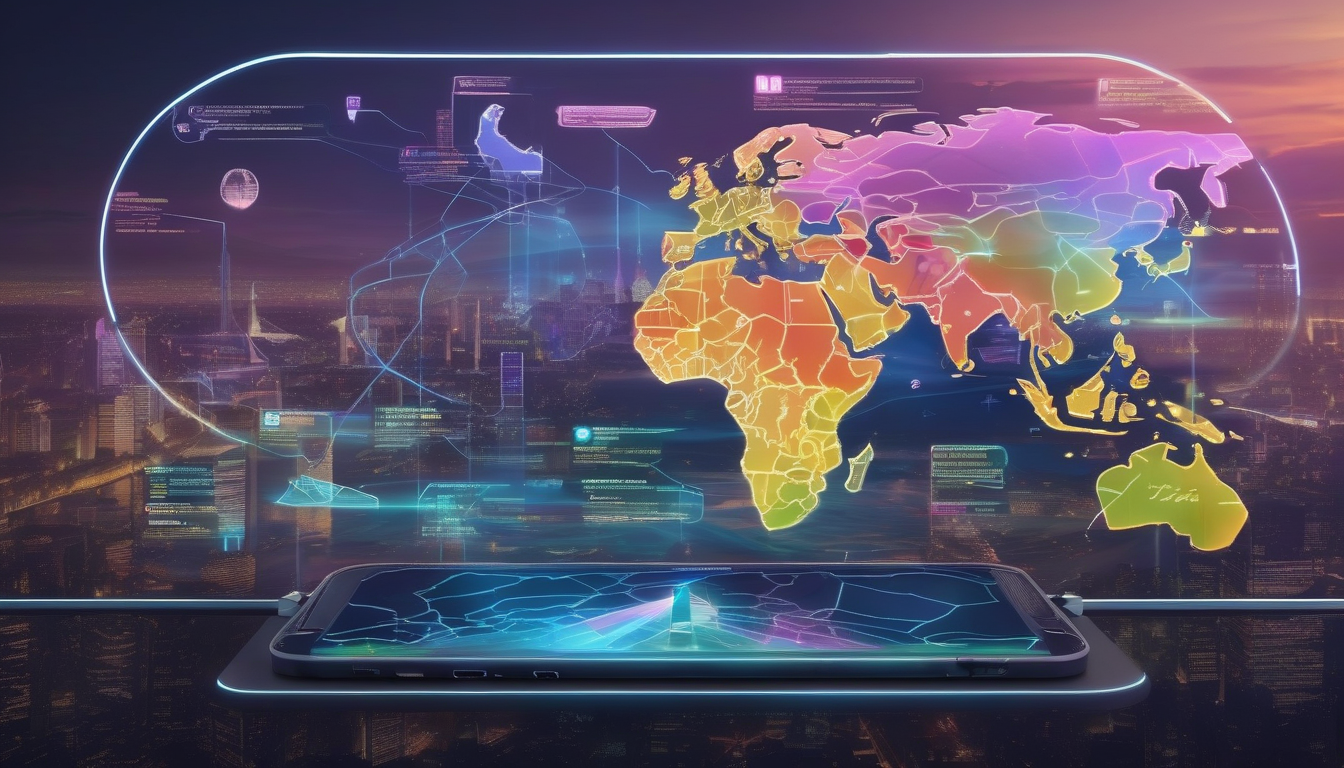
The Future of AI in Language Translation
The future of AI in language translation is nothing short of exhilarating. As technology continues to evolve, we stand on the brink of a new era where language barriers could become a relic of the past. Imagine a world where you can communicate effortlessly with anyone, anywhere, regardless of the language they speak. Sounds dreamy, right? Well, with the advancements in artificial intelligence, this dream is inching closer to reality.
One of the most promising developments is the potential for universal translation solutions. These solutions aim to provide real-time translation capabilities that are not only accurate but also contextually relevant. By harnessing the power of neural networks and deep learning, AI can learn from vast amounts of data and adapt to different linguistic nuances. This means that future translation tools will not just translate words; they’ll understand the essence of conversations, including cultural references and idiomatic expressions.
Moreover, as AI becomes more sophisticated, we can expect to see enhanced personalization in translation services. Imagine a virtual assistant that not only translates your messages but also understands your tone and style, ensuring your communication feels authentic. This level of personalization could revolutionize the way businesses operate in global markets, allowing for more meaningful interactions with clients and partners.
However, the journey towards flawless translation isn’t without its challenges. Issues like data privacy and potential biases in AI models must be addressed. As we move forward, it’s crucial for developers to ensure that the data used to train these models is diverse and representative. This will help mitigate biases and create a more equitable translation landscape.
In conclusion, the future of AI in language translation is bright and filled with possibilities. With continuous advancements, we can look forward to a world where communication knows no boundaries, fostering deeper connections and understanding among people from different cultures. The question remains: Are we ready to embrace this linguistic revolution?
Frequently Asked Questions
- How does AI improve language translation accuracy?
AI enhances translation accuracy through advanced machine learning algorithms that learn from vast datasets. These algorithms can identify patterns and context, allowing for translations that are more fluent and relevant.
- What are some popular AI-powered translation tools?
Some widely used AI-powered translation tools include Google Translate, DeepL, and Microsoft Translator. Each of these tools offers unique features, such as real-time translation and support for multiple languages, making communication easier across language barriers.
- What is neural machine translation?
Neural machine translation (NMT) is a cutting-edge approach that uses deep learning techniques to produce translations. Unlike traditional methods, NMT understands context better, resulting in more natural and coherent translations.
- What challenges does AI face in language translation?
AI struggles with cultural nuances, idiomatic expressions, and contextual understanding. These challenges can lead to inaccuracies, especially in complex or culturally rich languages.
- Are there ethical concerns with AI in translation?
Yes, ethical concerns include data privacy issues, potential biases in translation outputs, and the impact on human translators. It’s crucial to address these concerns to ensure fair and accurate translations.
- What does the future hold for AI in language translation?
The future of AI in language translation looks promising, with advancements expected to improve translation quality and accessibility. Innovations may lead to universal translation solutions that could bridge communication gaps globally.
